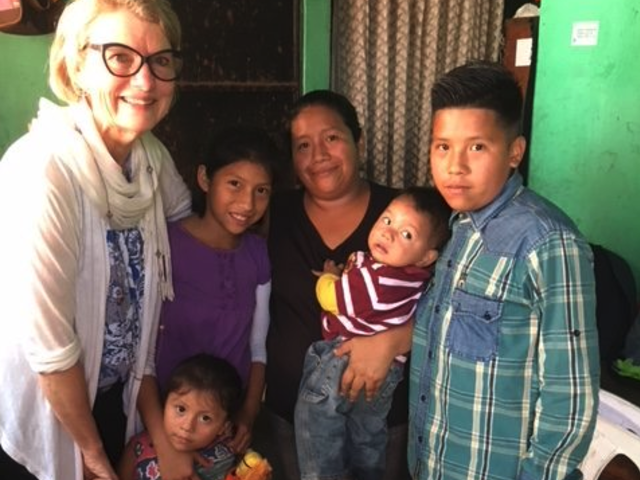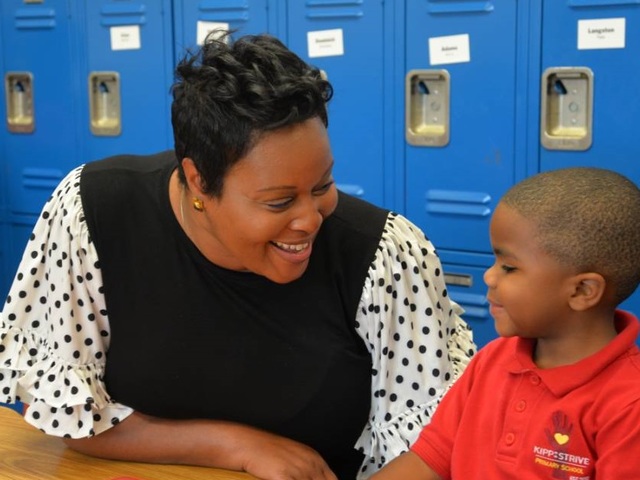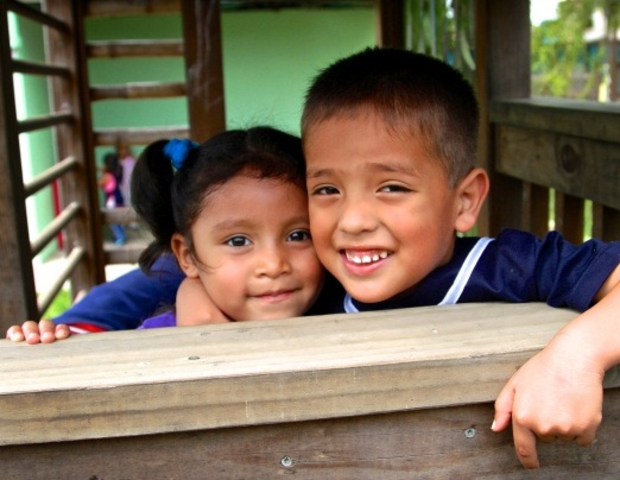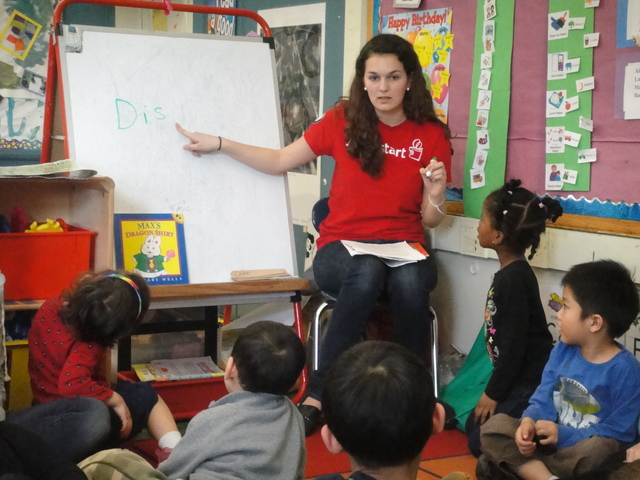Sasha was already an outspoken four-year-old when she started preschool at the Tremont Crotona Daycare Center in the Bronx, New York, last fall. She loved to make pretend hamburgers and care for the baby dolls in her classroom. And although she spoke little English at the beginning of the year, it didn’t stop her from making friends in the classroom. Sasha’s home language is Spanish, and as one who is learning two languages simultaneously, Sasha is considered a dual language learner (DLL).
Mary, a sophomore at Fordham University and a second year Jumpstart Corps member, leapt at the chance to be Sasha’s bridge between the languages. Mary is minoring in Spanish, and saw this opportunity to support Sasha’s dual language learning by making sure Sasha could participate and enjoy the Jumpstart sessions, which are taught in English. During storybook reading time, Mary took special care to highlight key story vocabulary in both English and Spanish so Sasha could follow along with the story. “This task required more consideration than I anticipated,” Mary explained. “I knew if I spoke only in English, Sasha would not understand the story at all. But, if I spoke in Spanish only, I would not be bettering her English.”
Hilary Roselund, Senior Director of Education & Research at Jumpstart, says that these strategies are key when working with DLL students. She adds, “Beyond using the child’s home language as a bridge to English, there are some other strategies for building English language skills during reading that educators can use, including reading with facial and vocal expressions to help emphasize meaning, simplifying the text to use words the student is likely to already know, and pointing to pictures in the text and using gestures for new words, among others.”
Jumpstart’s primary goal is to provide children with the early language skills in English that they need to be ready for kindergarten. At the same time, Jumpstart recognizes the importance of children’s home language in the dual language learning process and the importance of language in maintaining vital connections to family and culture. Mary demonstrated this each session by greeting Sasha with an enthusiastic “Hola, Sasha! ¿Cómo estás hoy?”
By the middle of the term, Mary had found the right balance and Sasha’s English language vocabulary grew to include words learned from session activities. During a lesson on shadows, Sasha aimed the beam of a flashlight at paper silhouettes of various animal and learned the words for shadow, horse, frog, pig, and the like. She also understood questions such as ‘What is your name?’ and ‘How are you today?’ and could mix English words into her Spanish language reply.
For Mary, seeing Sasha progress in both languages made this a particularly rewarding experience. Teaching a dual language learner also helped Mary. “It was awesome to be able to speak Spanish outside of my college Spanish classes. This experience was an important one for me because as I was helping her with her English, she was helping me with my Spanish because I did not feel judged if I made grammatical errors,” Mary said.
Jumpstart believes that bilingualism is an asset to the child, our program, and the world. In this classroom, we see the development of two bilingual individuals. Today Sasha enters kindergarten prepared and ready for school success in two languages. At the same time, Mary enters her junior year in college with even greater facility in Spanish. Kudos to both for their hard work!






